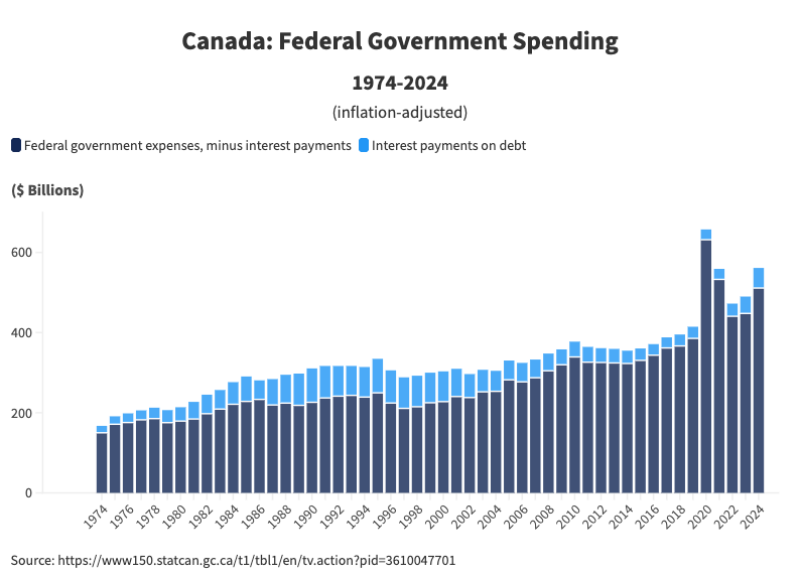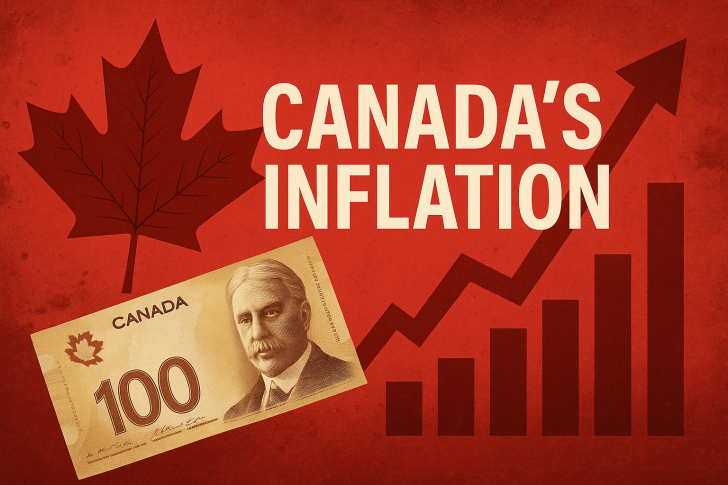Over the past fifty years, Canada's federal government has dramatically expanded its spending. When adjusted for inflation, per-person expenditure has nearly doubled, rising from $7,330 in 1974 to $13,536 in 2024. This 85% increase raises an important question: are Canadians actually seeing twice the value in public services, infrastructure, and economic performance?
The Numbers Tell a Story of Steady Growth
But as Canada Spends notes, Statistics Canada data shows that federal spending climbed steadily from the mid-1970s onward, with particularly sharp increases after 2019 due to pandemic-related programs. Total spending briefly topped $650 billion in 2020–2021 before settling at levels still well above pre-pandemic norms. The data also reveals a troubling trend: debt servicing costs, which had declined through the early 2000s, are climbing again as higher interest rates make borrowing more expensive for Ottawa.

What's Driving the Increase?
Several forces are pushing spending higher. Canada's aging population means healthcare costs keep rising, both for direct federal programs and provincial transfers. New initiatives like the Canada Child Benefit, climate funding, and pandemic relief have permanently expanded Ottawa's commitments. Meanwhile, growing debt and higher interest rates mean more tax dollars go toward servicing what we've already borrowed rather than funding new services. Perhaps most importantly, Canadians now expect government action on everything from housing crises to climate change, creating pressure for continued fiscal expansion.
Here's the uncomfortable reality: while spending has doubled, productivity growth and service quality haven't kept pace. Healthcare wait times remain stubbornly long despite increased funding. Infrastructure projects cost more and take longer than in comparable countries. The government appears to be spending more just to maintain current service levels rather than achieving breakthrough improvements. In essence, Canadians are paying twice as much but not necessarily getting twice the results — a troubling trend that demands serious attention to how public dollars are being used.
 Artem Voloskovets
Artem Voloskovets

 Artem Voloskovets
Artem Voloskovets


